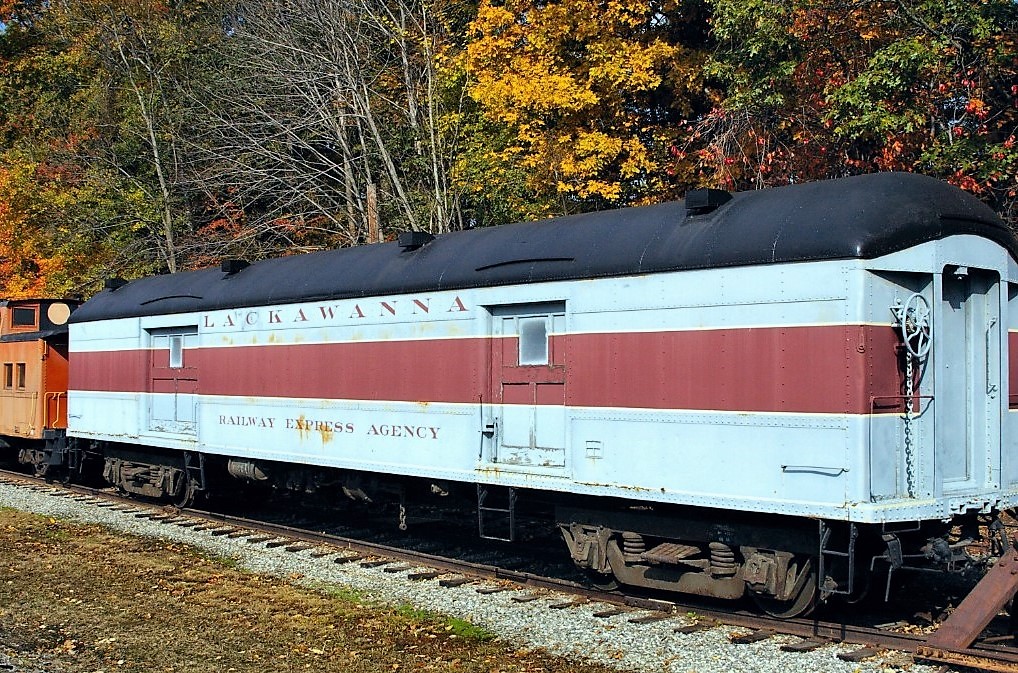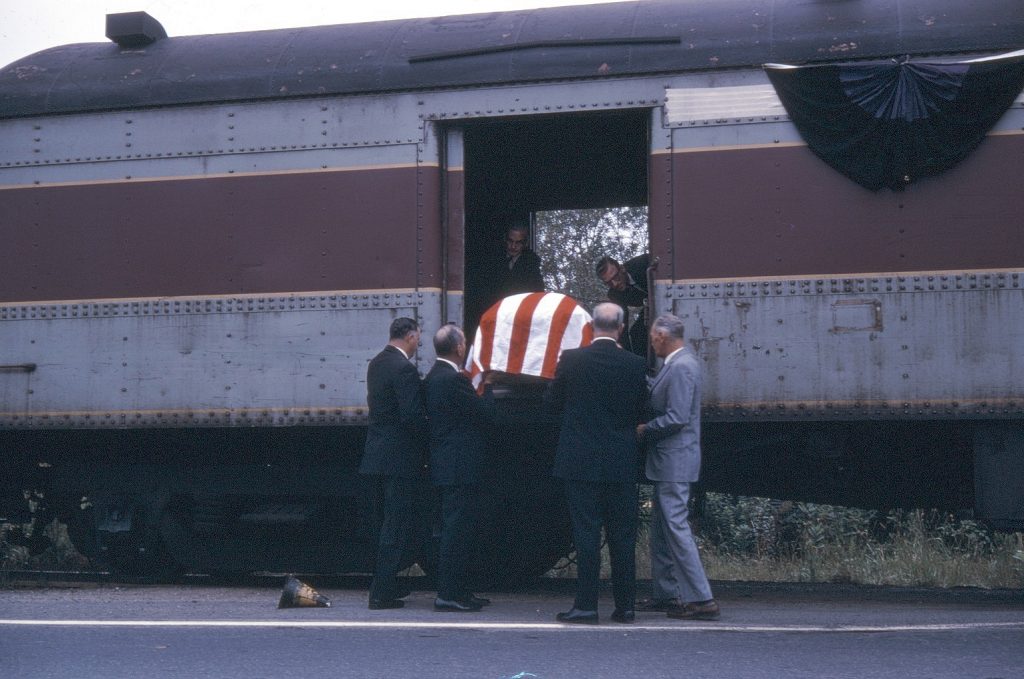
Deleware, Lackawanna & Western Railroad Mail Storage Car #2037
Intercity passenger trains impacted a railroad’s bottom line beyond the number of passengers which were carried.A significant amount of revenue could be earned by carrying U.S. Mail, packages and other time sensitive commodities on those trains. To meet those needs most railroads rostered an array of baggage, mail storage and other express cars which could usually be seen at the head end of most long-distance passenger trains.



Originally railroad rolling stock was constructed of wood. Around 1910 railroads adopted all steel construction as the standard for new passenger train equipment. The Lackawanna ordered its first ten all steel Baggage-Express cars in 1910 and placed orders for two dozen more over the next decade. By the mid-1920’s the railroad decided to scrap all of its remaining wood construction baggage car fleet. An additional 75 new cars were ordered with the Museum’s car, #2037, arriving in the first group of 30 delivered in 1925.
This group of cars was built by Pressed Steel Car Company and were numbered #2035 to #2064. They were 60 feet long, weighed 110,000 pounds and rode on 4-wheel trucks. Each side had two doors, one seven feet wide and the other four and a half feet. The cars were delivered in the standard Lackawanna passenger car paint scheme of dark green sides with yellow lettering.

These cars were designated Class MR, mail storage, and roamed the entire system. While documentary evidence of specific assignments is very rare, this particular car was recorded in June 1950 in the consist of the “Interstate Express”, a joint Reading Railroad-Central Railroad of Jersey-Lackawanna Railroad train which operated between Philadelphia, Pa., and Binghamton, N.Y.
When the Lackawanna introduced its new lightweight train “Phoebe Snow” in 1949, it adopted the grey, maroon and yellow worn by its freight diesel locomotives as the paint scheme for all of the railroad’s new passenger train equipment.

As older equipment was shopped it too would receive the new colors. By 1954 21 of the 30 cars in the #2035 to #2064 group had received the grey, maroon and yellow paint, but #2037 was not among them. In fact, no photographic evidence has been found to show that this car ever received the new paint scheme by 1960.
During the 1950’s the financial health of many Northeastern US railroads began to decline and the Lackawanna was no exception. It looked to merger with another railroad as the way to halt the decline and after several merger partners were explored the decision was made to combine with the Erie Railroad.

October, 1960, saw the creation of the Erie-Lackawanna Railroad (Technically the merger was not completed until 1961 and the hyphen in the name was dropped within a few years.).
The car continued to operate wearing its Lackawanna paint scheme until 1965, when it emerged from the shops in Erie Lackawanna grey, maroon and yellow and now numbered 402.

Steve Hepler of the Whippany Railway Museum relates the story of one of the more unusual assignments for one of the cars in the series: Earle Henriquez-Gil founded the Morris County Central Railroad, a steam powered excursion operation based at Whippany, N.J., in 1965. Earle’s father, Carlos Henriquez-Gil, who never had the opportunity to ride his son’s trains, passed away in July, 1968. A MCC train was assembled and after Carlos’ funeral service in Morristown, his casket was loaded into Erie Lackawanna Mail Storage car #401, which was obtained for the occasion, for the trip to his final resting place. With engineer Andy Barbera, dressed in a white shirt and tie rather than his usual engineer’s uniform, at the throttle of steam locomotive MCC #385 and also including MCC coach #1002, which carried the mourners, the train proceeded to the Ridgedale Avenue crossing in East Hanover, where the casket was then transferred to a waiting hearse for the short trip to the Gate of Heaven Cemetery, which is located just across the street. The train was then backed off the crossing and the funeral party proceeded to the gravesite. Since Carlos had not had the opportunity to ride on his son’s train, this was Earle’s gesture at fulfilling his father’s last wish.




With the expansion of the Federal Interstate highway network and increased competition from the airline industry, railroads saw their share of intercity passenger traffic steadily decline throughout the 1950s and 1960s. This led to a steady reduction in passenger service. On the Erie Lackawanna only one round trip train between Hoboken, N.J., and Chicago, Ill., the “Lake Cities”, remained by 1969. Now considered excess equipment, Mail Storage car #402 was withdrawn from service in October of that year. In January, 1970, the Erie Lackawanna discontinued the “Lake Cities” bringing to a close long-distance passenger train service on the railroad. No longer needed, many of the railroad’s baggage and express cars were sold off or scrapped.
Some express cars, however, were retained and reassigned to the Maintenance of Way department. Such was the case with EL #402, which on December 30, 1970, became tool car #485004 and was assigned to Elmira, N.Y.

The financial health of many of the railroads in the Northeastern U.S., including the Erie Lackawanna, deteriorated during the 1960s and the early 1970s ultimately resulting in their bankruptcy. Federal action to save rail service in the Northeast led to the creation of the Consolidated Rail Corporation (ConRail – The capital “R” was soon dropped) in 1976. Ownership of most of the assets of the EL, including tool car #485004, was transferred to the new railroad. Repainting cars used in company service was not a priority, so tool car #485004 continued to wear its Erie Lackawanna paint and number throughout its time owned by Conrail. In the mid-1980s, after 60 years of service for three railroads, this car was retired by Conrail. It was then donated to the Tri-State Railway Historical Society and moved to Whippany, N.J.


Tri-State repainted the car after acquiring it, giving it the Lackawanna’s grey, maroon and yellow scheme. In 2011 ownership of Lackawanna #2037 was transferred to the Whippany Railway Museum, which currently uses it for storage. Due for a repaint, the Museum plans to return the car to its as delivered look of dark green with yellow lettering.